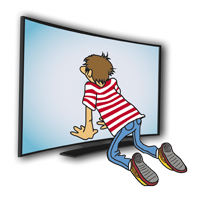Author: Rafael Repiso – Translation: Erika-Lucia Gonzalez-Carrion
In the beginning it was the name, everything begins with a name and as the times passes through it gains in meaning and at the end; it will only remain that, a name engraved either in metal or marble, diamonds and rust. There exist many identifying elements in an article, but none as fundamental as the title. The author should not rush when selecting the title of the article and it is even very common that if it is done wrong, the reviewers correct it.
The objectives of the title are:
- Describe the content of the article in a clear, specific, accurate, brief and concise way.
- To allow the reader to identify the content of the work easily.
- To help the information managers (documentary makers, librarians, etc.) to catalogue and classify the material accurately.
- To attract the reader.
The title, as well as the other identifying sections (abstract, keywords, DOI, etc.), should be composed once the article is done. It prevails the capacity to explain the content over the concision of the same, however the title should be brief.
The main error of a title is that is disconnected from the reality of the study it represents, that indicates that it has been done something that really has not been achieved. That the reader has finished with a reading and gets disappointed because what was promised has not been fulfilled. Manuel Alejandro Bobenrieth classified the errors of the titles in three categories: clarity, conciseness and over-explication (which in certain way is a concise error).
1. Clarity errors: Correct syntax and vocabulary to the readers’ reach.
- Use ambiguous or vague words.
- Use slangs, jargon.
- Use abbreviations and acronyms
2. Concision errors: Brevity in the way of expressing the concepts, that is, the effect of expressing them properly and with precision with the least possible words.
- Too extensive (to exceed 15 words).
- Too brief (telegraphic and nonspecific titles).
- Excess of prepositions and articles.
- Unnecessary use of subtitles.
3. Over-explanation errors: Statement or repetitive and useless presentation of a concept, which is taken for granted. Examples:
- “Study” about… Research about… “Report” of…
- “Contribution” to… “Results of a study” on…
- “Analysis of the results” of…
